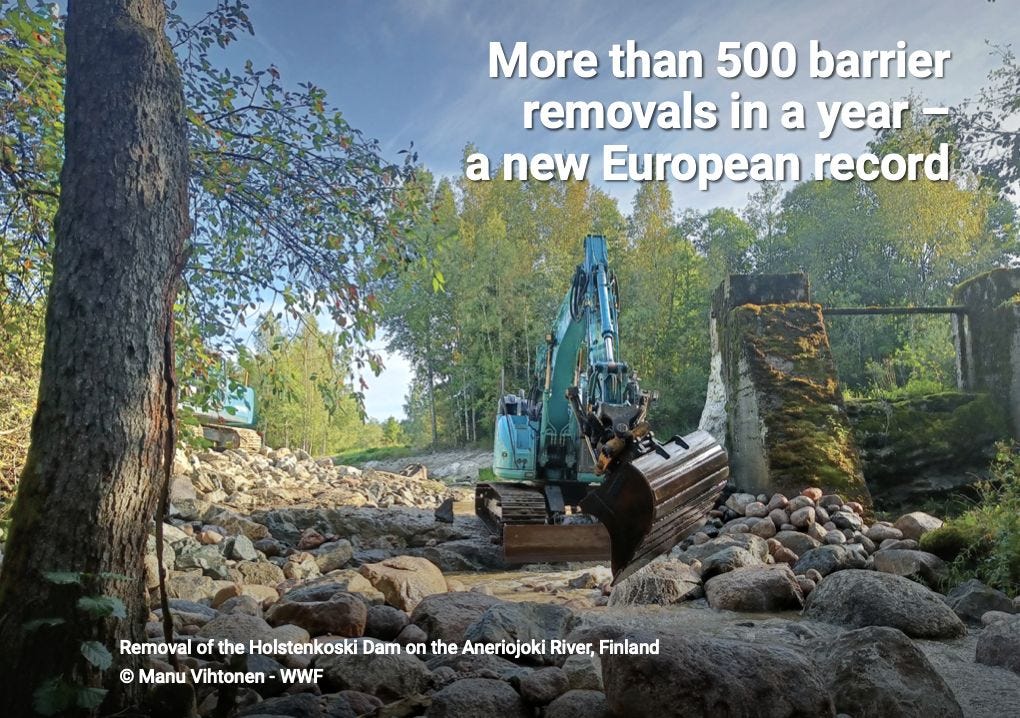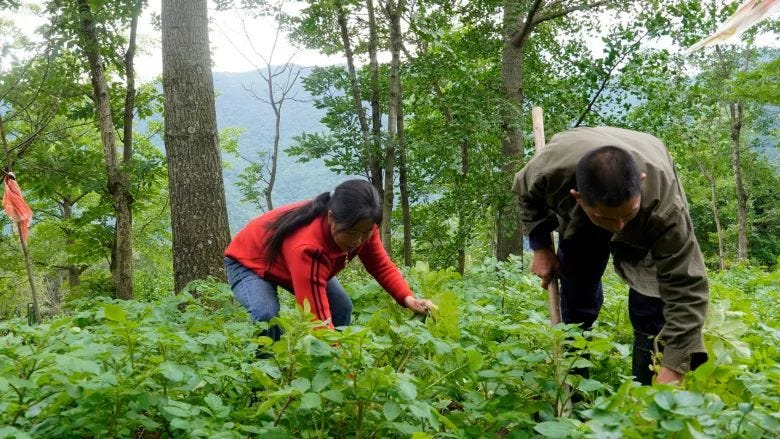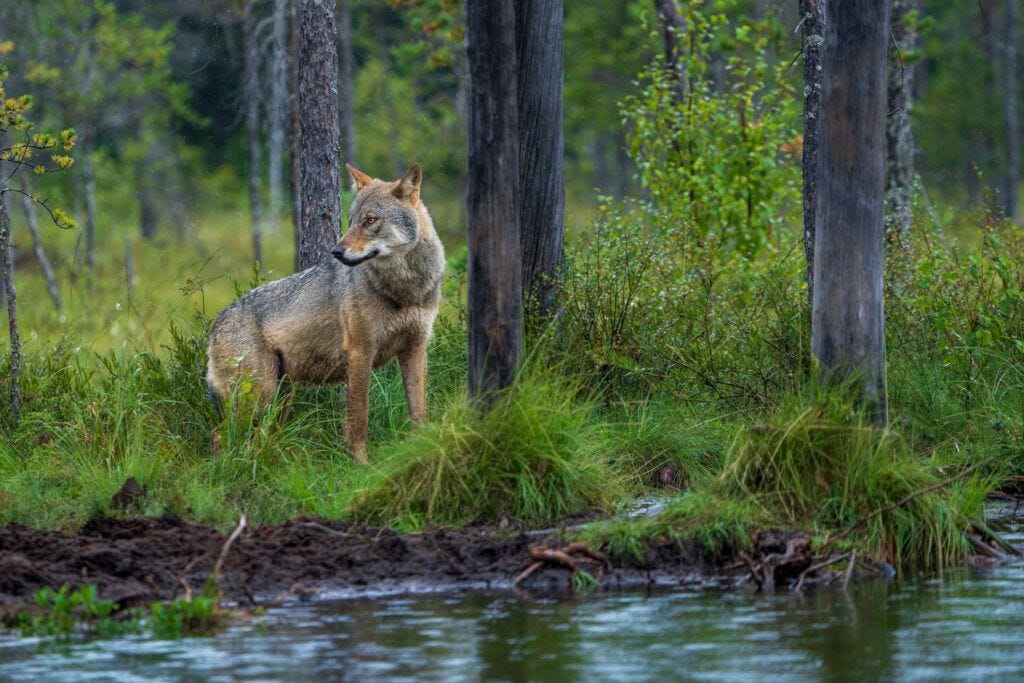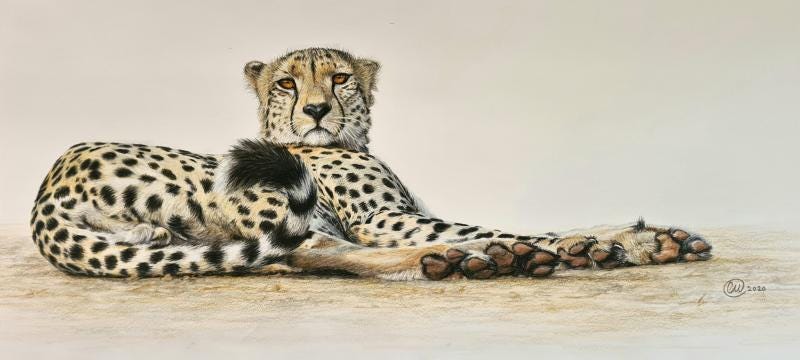Welcome to the latest edition of the Rewilder Weekly! 🦬🌳🐺🌞🌍
Before jumping into this week’s eight selected stories, a quick alert that the 22nd of May marks the International Day for Biological Diversity. Explore the UN’s website, learn about the global biodiversity framework and put this quote into your quiver of quotes: “When biodiversity has a problem, humanity has a problem.”
Now then, let’s get on with it - wishing you a good week.
Cheers,
👉 As a reminder: If you come across stories you’d like to see featured in an upcoming edition of the Rewilder Weekly, send them to me and I’ll gladly do what I can.
1) Record-breaking year for European dam removals
European rivers have been fragmented by more than 1.2 million in-stream barriers. Dam Removal Europe has been publishing an annual progress report for the last five years to evaluate the advancement of EU policy implementation and to analyze the progress and impact of barrier removals as a river restoration measure. Their success is undeniable - because of their efforts, rivers across Europe flow more freely, are thus able to do their work of enriching biodiversity and acting as a natural solutions against flood risks.
Dam Removal Europe’s 2024 report reveals another record-breaking year, with 542 barriers removed across 23 European countries! For the first time, Finland topped the list with 138 removals, followed by France, Spain, and Sweden. New joiners to the dam-removing countries are Bosnia and Herzegovina, Croatia, Czech Republic, and Türkiye. As Dam Removal Europe rightly states, this is “a strong signal that the river restoration movement is expanding.”
👉 Go here for DRE’s 2024 progress report
2) China is rewilding at a massive scale
While not all is to everyone’s liking in China (then again, that utopian place where all's well and everyone’s happy about everything doesn’t exist), China has what it takes to make rewilding happen at the massive scales rewilding needs to happen. Here are just two examples:
The World Bank Group reports on China’s efforts to build sustainable forest ecosystems in the upper reaches of the Yangtze River. Moving away from monocultured forests, China has transformed 650 square kilometers, expanding mixed-forest cover from 6 to 62%. The effort involved 35 counties, engaged 378 towns and 2’477 villages, delivering technical training and employment opportunities (the initiative provides over 10’000 farmers with sustainable livelihoods and double their previous incomes). See what I mean by scale? And the plan is to go from 650 to 1’300 square kilometers in the next two years.
👉 Go here for the article
Dialogue Earth reports that China plans a project to rewild the endangered North China Leopard after recent sightings just twenty kilometers outside of Beijing. This new initiative is planned for ten years and will plant 10 million oak trees across mountain ranges to create critical wildlife corridors connecting Beijing, Hebei and Shanxi provinces.
3) Sweden’s Big Five reports on the latest drive to decimate the wolf in Sweden
Now that the EU has voted to downgrade the wolf’s protection status, more licensed quota hunting will take place across Europe. The restoration efforts, the recovery of this iconic keystone species, are not just threatened, but torpedoed. Sweden has ignored EU rules since 2010 and their wolf hunting since then was a consistent breaking of the law. Sweden’s Big Five thinks that there may be as few as 250 wolves left in the huge country that is Sweden (Switzerland, 11x smaller than Sweden, has the same number of wolves).
The big argument for the decimation of the wolf in Sweden was always that, “if we downsize wolf populations, eventually there’ll be greater acceptance.” So, since 2010, this annual slaughter of wolves has taken place ... and Magnus Orrebrant (Secretary General of the Swedish Carnivore Association) points out that “15 years of licensed wolf hunting in Sweden have not increased the level of acceptance among the wolf’s opponents to coexist with wolves.” That argument clearly was and remains one of the many smokescreens trophy hunting communities put forth. Science clearly tells us that that coexistence, not slaughter, is the right way forward.
4) Killing the UK’s countryside
“It’s time to ban shooting, it’s time to stop killing our countryside,” says presenter, naturalist and Animal Aid patron Chris Packham as part of Animal Aid’s latest campaign. Watch the video and you’ll be startled and shocked. Every year about 50 million non-native pheasants and partridges are released into the wild for the sole purpose of then being gunned down en masse. All of this has a hugely detrimental effect on nature. I’ve researched this in painful detail - if you can take it, learn all about it here 👉 The annual assault of fifty million on Britain’s nature.
The British Association of Shooting and Conservation has a very different take, of course, saying that “Claims about the impact of game bird releasing ignore the vital conservation work done by the shooting community, who manage millions of hectares to support biodiversity and protect vulnerable species.” The shooting industry’s obfuscations and lies are blatantly obvious and I’ve also taken the time to expose their marketing ploys. You can read my expose here 👉 “The Value of Shooting” report: a high-gloss marketing mess.
👉 Go here for the article (and get the “Stop Shooting” action pack)
5) The place on Earth where it would be easiest to embrace passive rewilding, to let nature lead
I’m talking about the deep seas, more specifically the seabeds of the deep. Our species continues to excel at wreaking havoc on nature across the globe - and that includes the oceans, of course. But the deep seas, for the most part, have been spared so far because a) too deep and b) not economically viable. Now deep sea mining is becoming very, very attractive to some. But it clearly remains, and it shouldn’t need saying, an enormously horrible idea.
In an excellent article, oceanographer Mandy Joye shares her experience in a submersible to the place where, fifty years ago, the idea of deep sea mining was tested. She says that the scars are still visible today. Chris Robbins of the Ocean Conservancy explains ecosystem risks: “The mining machines trawling through the ocean bed release waves of sediment from the ground, and discharge mining wastewater from the vessels on the surface, cycling abyssal debris in plumes that can travel large distances into the water column. ... It’s unclear what impact this will have on the ocean's ability to capture carbon. Species living in the dark zone above the abyss but below the surface are responsible for drawing down upwards of six gigatons of carbon, which is about 14% of the carbon that humans emit into the atmosphere each year.”
According to Planet Tracker, the vacuuming vehicles could also be releasing more than 172 tonnes of carbon directly from the seabed every year for every square kilometer mined.
6) The vanishing of native oysters from Scotland’s Loch Sween Marine Protected Area
Oysters are considered a keystone species because of the big impact their presence has on the environment. As with all keystone species, they are crucial for balance, for healthy, rich biodiversity. During my recent trip to Highlands Rewilding’s Tayvallich peninsula, I learned that their own survey had shown a shocking decline of oysters in the Loch Sween MPA. I walked part of the loch’s intertidal and - same as Marine Rewilding Lead David Smyth in this video, I saw barely a shell.
Where there should be 100’000 and more, just 47 live oysters were found. I wrote about this and more in the article about my time on Tayvallich. There is good news in that NatureScot has now committed to doing their own survey of the Loch Sween MPA this year. On the other hand, the government’s plans to counteract illegal oyster gathering and the restoration of oyster populations don’t exactly boost my faith in NatureScot (especially also in light of their feet-dragging with regard to beavers and ignoring the destruction caused by open-net salmon farms). But hey, I’m ready and willing to have my faith in them restored ... if they stop standing in the way of restoring nature.
7) Even when livestock is readily available, wolves prefer wild prey by a massive margin
For one thing, wolves want to be nowhere near our species. For another, even when we’re not there, a new study highlights that they’re barely interested in livestock (as long as there is wild prey, of course). Researchers write that, “despite the high availability of unguarded herds of cattle and horses, wolves prey mainly on wild mammals. Managers searching to solve wolf-livestock conflicts should consider that wolf depredation is not a simple function of livestock availability but is also influenced by other factors, such as the species and breed of livestock, grazing methods, landscape, and availability of wild prey.”
The 2-year study investigated a region in Poland’s Warta River Mouth where around 4’000 cattle and 700 horses graze freely (unprotected). Two wolf packs have made that region their home. Researchers analyzed scat and found that the wolves fed mostly on wild ungulates (81.9%) and wild medium-sized mammals (14.5%). The rare cattle kills made up just 3%. “During these two years of research, only three cattle calves consumed by wolves were found. The diet of wolves in the WRM did not significantly differ from the food composition of these predators in six other study areas within the Central European wolf population.”
8) An in-depth look at the value of GPS-tracking animals
The GPS-tracking of animals greatly assists in monitoring recovery efforts of an increasing number of species. It helps us understand how they move, how they behave, how they migrate, where challenges arise - even how they evolve over generations … but did you know that they may also be able to help our species prepare for earthquakes?
A few years ago I was an AI conference and there Martin Wikelski, Managing Director at the Planck Institute's Institute for Animal Behavior, gave a lecture entitled “Tracking Wildlife: When Animals Predict Catastrophes”. What he showed us was fascinating in many ways, with goats indicating next volcanic eruptions at Mount Etna, with birds teaching us about climate change dangers and alerting us about the inevitable next virus. The global field of animal tracking is fascinating and you and I can do our bit by using the Animal Tracker app.
To conclude this week’s edition, wildlife artist Charlotte Williams shares with us her rendering of a magnificently lounging cheetah, apex predator and the world’s fastest land animal (from 0 to 112 km/h in 3 seconds!). It is classified as vulnerable by the IUCN. Climate change, habitat destruction and human hunting are key contributors to the threat of extinction. It is estimated that there are about 6’500 mature individuals left in the world today.
If you enjoy the Rewilder Weekly …
… consider supporting my work. Your paid subscription will help generate the funds needed to realize a unique rewilding book I’m working on (if you want to know more about it, let me know). And, of course, that paid subscription also ensures that the Rewilder Weekly will always keep going for those who cannot afford to pay. A thousand thanks!
That’s it for this week’s edition! For more rewilding insights and stories from around the globe, use the #rewilding hashtag on LinkedIn and follow people, organizations and groups that are as passionate about rewilding as you are. Let’s keep connecting and growing the movement!






















